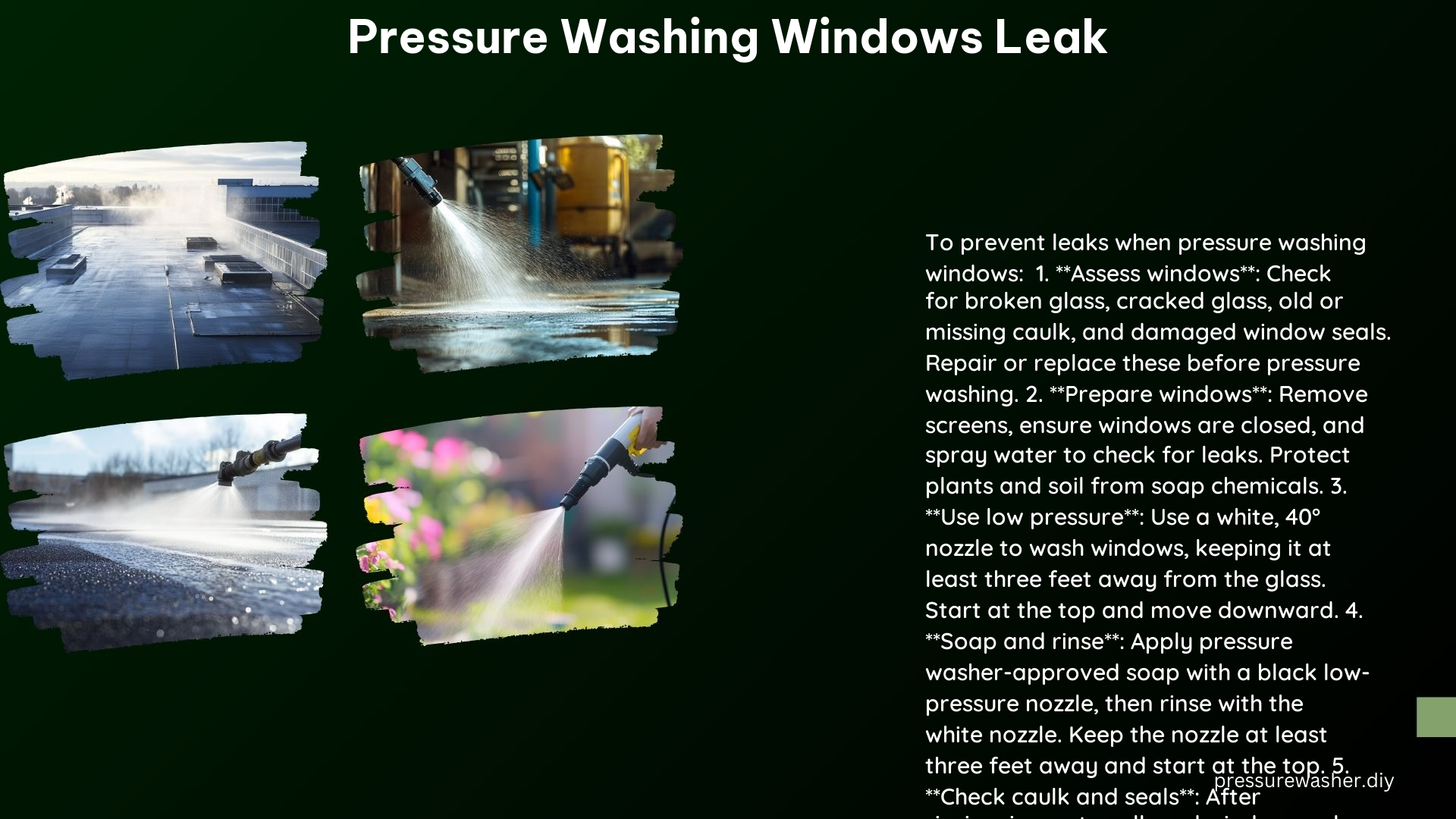Pressure washing windows can be a delicate task, and it is crucial to take precautions to avoid water seepage and damage to the windows. This comprehensive guide will provide you with the necessary technical details and expert advice to ensure a successful and safe pressure washing experience for your windows.
Precautions to Avoid Water Seepage
Inspecting the Windows
Before starting the pressure washing process, it is essential to thoroughly inspect your windows. Look for any signs of damage, such as broken or cracked glass, old or missing caulk, and damaged window seals. Broken or cracked glass should be repaired, and old caulk should be replaced and allowed to dry completely before proceeding. Additionally, ensure that the glazing between the frame and glass is intact and solid, especially for wood-framed windows, as this can be a common entry point for water.
Preparing the Windows
To ensure a thorough and safe cleaning, remove any screens from the windows if possible. This will allow you to access the entire surface of the glass and prevent potential damage to the screens. Additionally, make sure that all windows are closed to prevent water from entering the house during the pressure washing process.
Utilizing the Right Techniques
When pressure washing windows, it is crucial to use the appropriate techniques to avoid damage. Start by applying a soap solution to the windows using a low-pressure nozzle. This will help break down any dirt and debris on the surface. Then, rinse the windows using a high-pressure nozzle, but be sure to maintain a safe distance of at least three feet from the glass to prevent cracking or shattering.
Checking for Leaks
Before and after pressure washing, it is essential to inspect the windows for any signs of leaks. Spray the windows with a regular water hose to identify any potential problem areas. After the pressure washing is complete, closely examine the caulk and window seals for any damage or condensation, which could indicate a leak.
Ensuring Securely Sealed Windows

Regular Maintenance
Maintaining the caulk and seals around your windows is crucial to prevent water damage and leaks. Regularly inspect these areas and make any necessary repairs or replacements to ensure the windows remain securely sealed.
Proper Installation
If you have storm windows, it is important to ensure they are installed correctly. The upper pane should be furthest from the house, and the inner pane should be closer to the house. This configuration helps prevent water infiltration and improves the overall efficiency of the storm windows.
Weep Hole Maintenance
Storm windows often have small weep holes at the bottom, which allow accumulated water to drain. Make sure these weep holes are not clogged or painted over, as this can lead to water buildup and potential leaks.
Additional Tips
Using the Right Equipment
When pressure washing windows, it is essential to use the appropriate equipment. Opt for a pressure washer with a wide fan tip and maintain a distance of at least three feet from the windows to avoid damage.
Avoiding Ladders
Never use a ladder to pressure wash windows or siding. Instead, consider using a second-story nozzle kit or a telescoping extension wand for two-story structures to ensure safe and effective cleaning.
Hiring Professionals
If you are unsure about pressure washing your windows or have complex window configurations, it may be best to hire a professional. They have the necessary expertise and equipment to complete the job safely and effectively, reducing the risk of water damage or other issues.
Technical Specifications
Pressure Washer Settings
When pressure washing windows, it is crucial to use the appropriate settings. Use a low-pressure nozzle for applying the soap solution and a high-pressure nozzle for rinsing. Maintain a pressure above 20 degrees and stand back far enough to avoid breaking the window.
Soap and Detergent
Use a pressure washer-approved soap or detergent that is specifically formulated for use on windows and siding. This will help ensure the safety of the glass and prevent any potential damage.
By following these detailed guidelines and technical specifications, you can successfully pressure wash your windows while minimizing the risk of water seepage and damage. Remember to always prioritize safety and consider hiring a professional if you are unsure about the process.
References
- Simpson Cleaning. (2021). Can I wash windows with my pressure washer? Retrieved from https://simpsoncleaning.com/can-i-wash-windows-with-my-pressure-washer/
- Cleaning World, Inc. Can Pressure Washing Damage Windows? Retrieved from https://www.cleaningworldinc.com/can-pressure-washing-damage-windows/
- Contractor Talk. (2012). Pressure washing and window seals. Retrieved from https://www.contractortalk.com/threads/pressure-washing-and-window-seals.121568/
- Reddit. (2021). Did power washers ruin my windows? (Pic). Retrieved from https://www.reddit.com/r/HomeImprovement/comments/mb0m2w/did_power_washers_ruin_my_windows_pic/
- Elegant Painting. What to expect when your home is being pressure washed. Retrieved from https://www.elegantpainting.com/pressure-washing/
